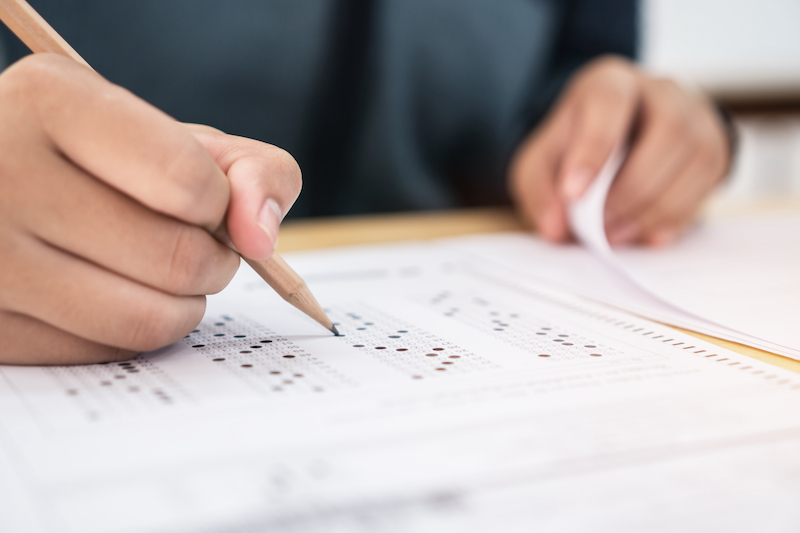The rise in students with specific learning disabilities is a reflection of the improvements that have been made in identifying kids who have trouble learning whether in the school system or by a health care provider. At Learnfully, we believe all learners are brilliant in their own right, no matter how they process information and what specific difficulties they have.
We’re excited to help demystify the top ten myths about specific kinds of learning problems so that we can celebrate those who learn differently now more than ever.
1. Learning disabilities are directly correlated to intelligence.
A common misconception is that learning disabilities are related to low or average intelligence. In fact, it is quite the opposite. Learners who learn differently typically have average or above-average IQ. Unfortunately, because they are constantly challenging themselves, we do see 20% on average drop out of school each year which can easily send the wrong message to society as a whole. The first step in retaining these learners is helping them understand that their specific learning disability is not an imperfect ability. From elementary school on, many of these children suffer from low self-esteem and need an Individualized Education Plan or IEP. The plan will help identify their learning difficulties and inform the child’s teacher of their specific learning disorder and how best to improve their academic skills while nurturing their self esteem too.
2. Learning disabilities impact boys more than girls.

The sex and gender identity of a learner does not impact a child’s ability to learn. That said, statistics suggest that males are diagnosed earlier and offered early intervention during an earlier grade level. Female learners’ symptoms can be less overt and go unnoticed until well into elementary school and beyond. As young children, females with learning disabilities may appear compliant and sadly, male learners may show more of an emotional disturbance in the classroom and are viewed as “difficult” during early childhood. Thus leading boys to educational assessments or a visit with a clinical psychologist who can then identify the most common learning disabilities at an early age.
3. Accommodations are a band aid approach.
By definition, accommodations are used to level the playing field for school-aged children who learn differently than their peers. “Accommodation” is a general term used to describe an alteration of environment, curriculum format or equipment. This alteration allows an individual with a disability to gain access to content and/or complete assigned tasks and everyday activities successfully regardless of the person’s ability level. They allow students with disabilities to pursue a regular course of study no matter what the child’s needs and can make a huge difference in educational success. Since accommodations do not alter what is being taught, instructors should be able to implement the same grading scale for students with disabilities as they do for students without disabilities.
4. Dyslexia is defined by reading backwards.
Dyslexia involves neurological deficits that impact many layers of the reading process and not just one’s directionality. Common symptoms for dyslexia include but are not limited to: challenges with rhyming, blending words, recalling sight words, reading fluidly with expression and poor spelling abilities. Dyslexic learners tend to be very creative and imaginative, so they try to compensate for their differences by tapping into their strengths.

5. You can grow out of a learning disability because they are school-based.
Learning disabilities are lifelong conditions that follow a learner as they age. Once diagnosed, learners can feel empowered to discover strategies as to how to reach their full potential and what special help they need to navigate the communicative world around them. Regardless of their successful methods, learning disabilities do not fade away as a learner ages, but they can become easier to manage.
6. Healthy habits such as nutrition, physical fitness and sleep have no impact on learning.
Nutrition, exercise and sleep patterns actually improve attention, energy levels, motivation and productivity. Sometimes symptoms of learning differences can increase as a result of poor habits. Trained experts can separate the symptoms from the daily happenings to determine whether or not a diagnosis is warranted. All this to say, healthy habits can certainly bolster one’s ability to learn, but cannot cause or cure a diagnosable learning disability.
7. Learning disability symptoms are overt and can be seen.
Not all learning difference symptoms are noticeable, especially at a young age when expectations are lower. In fact, some can even mask or hide their differences until a later age (as noted in the myth about girls vs. boys). Learning disabilities tend to involve symptoms that are underlying and not as measurable at first. As a learner ages, variables such as their environment, puberty and academic/social performance tend to heighten both the learner’s and their caregiver/educator’s awareness as to how they are struggling so that they can seek the right support.
8. Learning disability is just another way of saying ‘lazy’ or ‘unmotivated.’

Quite the opposite! Those with learning disabilities tend to work harder than neurotypical peers because they have to overcome struggles that their peers do not. Over the course of my 20 years in this field, I have heard this myth from caregivers and educators the most (believe it or not!). Since we know our children are capable, labeling them as lazy or not driven seems to justify why they are not becoming who we know they are meant to be. Thankfully, learners are able to find strategies and help for their disabilities to move past the potential lack of motivation/energy.
9. Lack of parent involvement causes learning disabilities.
Since learning disabilities are biological, caregiver and educator involvement only helps us to catch their LD faster and earlier. Granted, the more support the better, especially when you have learning differences. But the lack of support, time, energy invested into a learner’s academic success does not cause learning disabilities.
10. Medication can help learning disabilities.
This is typically not the case, especially since diagnoses such as ADHD and Anxiety/Depression are not necessarily considered learning differences. Neuroplasticity, the ability of the brain to form and reorganize synaptic connections, especially in response to learning or experience or following injury, is alive and well though. There are multi-sensory, evidence-based programs that can actually rewire the brain to make learning easier for those with LDs. The LDs do not go away, per se, but learners are better able to navigate their symptoms with these methodologies.
There are plenty more myths out there that we did not discuss here, so feel free to use other resources such as Know the LDA Terms and Understood.org if you didn’t find the myth you were looking for or want to learn more.












